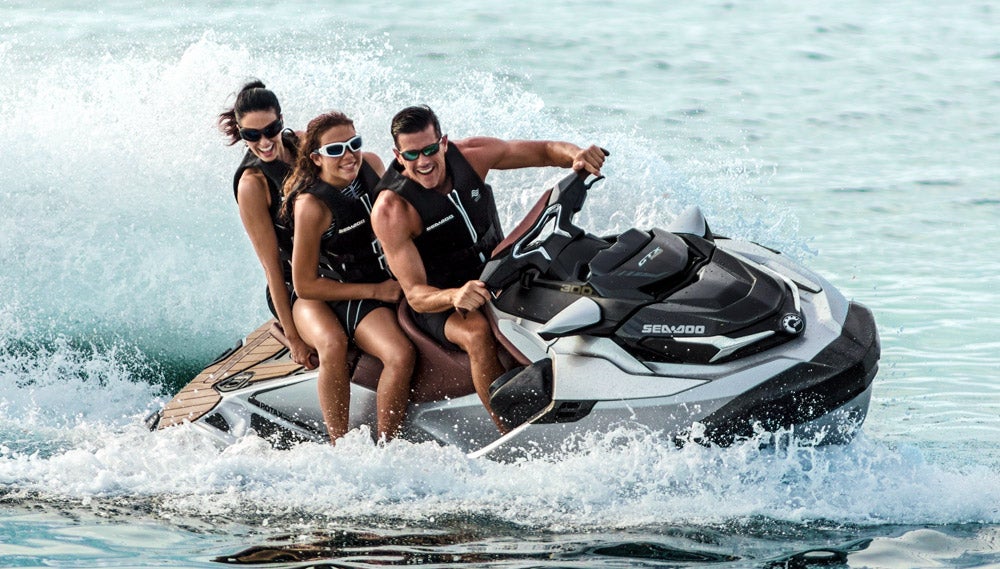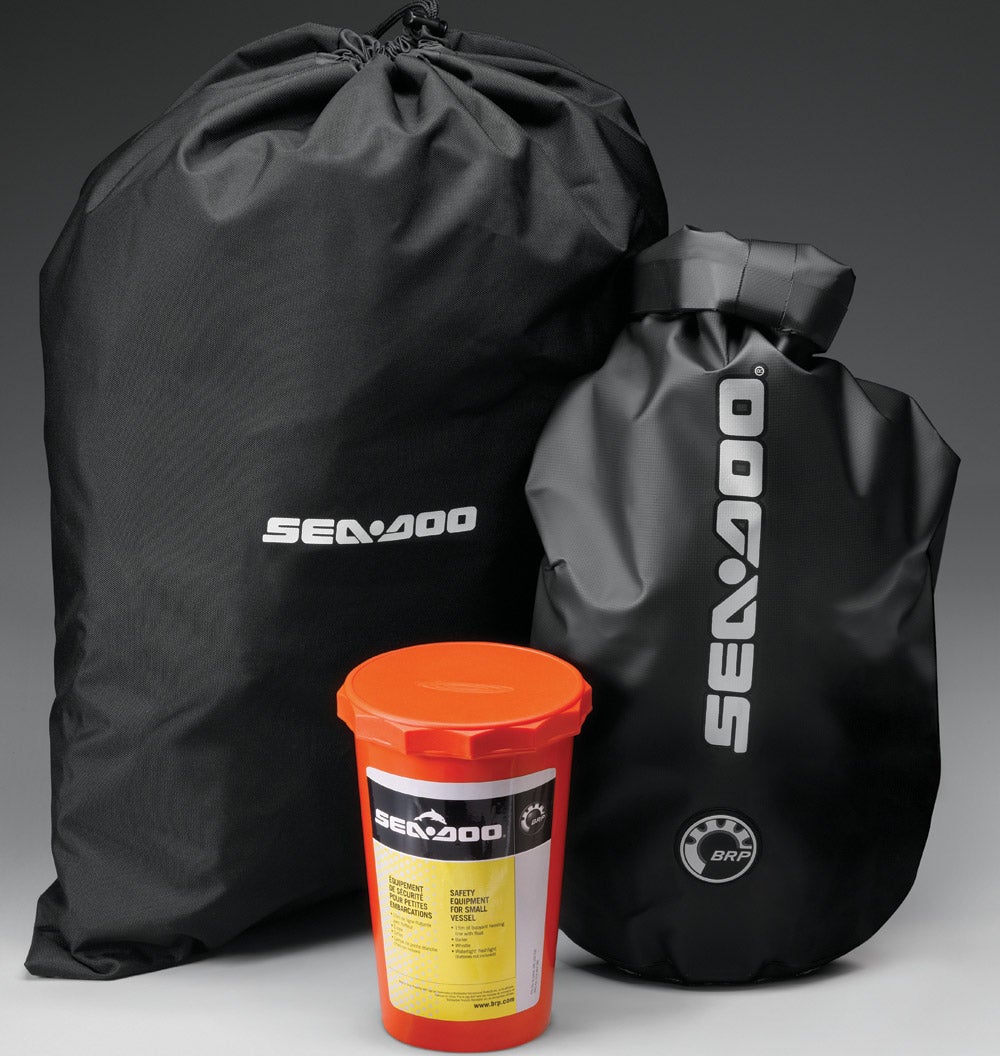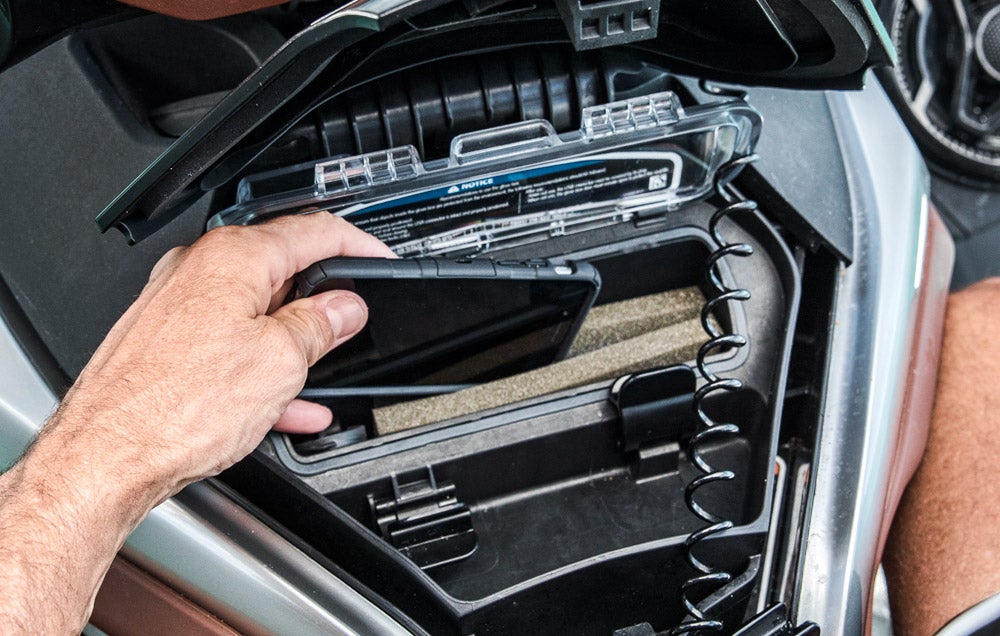2018 Sea-Doo GTX Limited 300 Review
The 2018 Sea-Doo GTX Limited 300 benefits from a redesigned deck and hull, along with Sea-Doo’s first sound system.
Engine: Three-cylinder 1630cc
Fuel Capacity: 15.9 gallons
Storage Capacity: 27 gallons
Seating Capacity: 3
MSRP: $16,899
Sea-Doo’s GTX Limited craft have always strived to be the ultimate luxury models, but the 2018 model year ushers in arguably the biggest changes to the line in its history. Both hull and deck have been redesigned as part of Sea-Doo’s radical GTX/RXT makeover. Storage and seating also sport bold new twists that break from convention. Add Sea-Doo’s first sound system — on top of a craft that has always packed in additional extras and amenities to deliver a one-of-a-kind PWC experience — and you’ve got a model worthy of attention.
Whether you’re the target buyer…or just window shopping.
Makeover Madness
Take in the 2018 Sea-Doo GTX Limited 300’s appearance for the first time and the craft’s newly low-slung appearance is obvious. Notably, there’s less bulk above the waterline on the craft’s forward half. The saddle also sits 1.4 inches lower under the driver, and 3.0 inches lower below passengers. Footwells also sink deeper into the hull. According to Sea-Doo, the goal is to lower the craft’s center of gravity and improve stability. As much as personal watercraft are known as sporty play craft, Sea-Doo notes customers also want to “hang out” on their boat, coving with friends or maybe standing at the stern to cast a fishing line. The popularity of tow sports also demands a more stable craft. Below the waterline, the hull now features a subtle reverse chine to enhance stability underway; a secondary chine widens the craft and enhances stability at rest.
Performance, however, will never play second fiddle. Sea-Doo did some further tinkering below the bond line as well, incorporating elements of the nimble RXP-X 300 model to improve the craft’s agility and response. The Limited’s deadrise is listed at 20 degrees, but the hull entry is now much sharper and more pronounced. The change, in part, is aimed at offshore riding but also sharper overall handling. The Limited, like all new GTX/RXT models, can carve more aggressively than any Sea-Doo three-ups in recent memory. Yet, I did notice a small quirk. Following an abundance of other PWC, the hull can lose this precision tracking and sometimes wander as it encounters the mixed-up wakes of craft ahead. But that’s an unusual situation. In more typical conditions, the craft handled rough conditions with aplomb, and cornered like a nimble racer.
That performance is enhanced by a new lighter weight. The 2018 Sea-Doo GTX Limited 300, now shorter by about 3 inches but an inch wider than the previous model, has trimmed nearly 90 pounds of its former bulk. That improves the power-to-weight ratio by nearly 10% on this model. The Limited 300’s Rotax 1630 ACE engine may desire premium fuel, but it’s the most powerful engine Rotax has ever produced. Expect an abundance of low-end punch out of the hole, with a 0-to-60 mph time under four seconds. Top speed is electronically limited to 67 mph, but capable of more in the right conditions…or with aftermarket assistance.
Innovation Excites
While Sea-Doo’s Limited models naturally get extras, but in reality the platform’s newest standard features are just as impressive. I’d argue the most useful is the LinQ accessory system. Already proven on Ski-Doo snowmobiles, LinQ consists of a pair of pop-up, composite “cleats” hidden within the expansive aft platform. Pull them up into position and they act as anchors for a variety of practical accessories, including a 4.2-gallon cooler that seemed a worthy competitor to the bar-setting Yeti brand, a 4-gallon gas caddy, 5.5-gallon dry bag, and retractable ski pylon. Cooler, gas can and dry bag secure with simple yet robust cam-style latches. When mounted, I noted no significant play; they’re pretty much rock solid and feel a part of the craft, even in rough conditions. The soft-sided dry bag can also be stacked atop the fuel caddy to make use of both accessories simultaneously. Adding these accessories adds to an already high bottom line. The cooler will set you back an additional $279.99, the dry bag $194.99, the tow pylon $299.99, and the fuel caddy a surprisingly hefty $179.99. But they’re exceptionally practical. A run down the picturesque, but desolate Colorado River proved this fact, with both cooler and fuel caddy relied upon. Accessories fill, but never clutter the aft deck. With an accessory in place, I noted I could still deep water board when necessary.
Elsewhere, Sea-Doo has flipped the script on conventional bow storage, foregoing the traditional bow storage hatch in favor of one immense hatch that incorporates both handlebars and information display and opens toward, rather than away from, the driver. Rather than awkwardly lean out over the handlebars to try and access items in bow storage, I simply stayed seated, opened the compartment via two pull-up latch handles, and reached in. Storage capacity suffers as a result of the design; the former 42.8-gallon capacity is now downsized to 27 gallons. The fact that everything is within arm’s reach, however, makes it almost unnoticeable, especially given that the 2018 Sea-Doo GTX Limited 300 includes an internal organizer system that prevents the compartment from becoming just one big tub of gear. With the new storage system, the glovebox becomes mostly a padded, waterproof compartment for your phone, complete with USB port on the Limited. I give the designated storage and USB port high marks, but question the longevity of the padding; it’s simply two pieces of generic foam into which you slip your phone. There’s also no longer room for a water bottle within the glovebox, meaning you’ll need to open the storage hatch every time you want to take a drink. As to any questions about the solidness of the steering assembly, however, don’t fret. It proved rock solid, with no indication it’s now mounted atop a moving part.
Yet another part that is now surprisingly solid yet moveable on the 2018 Sea-Doo GTX Limited 300 is the saddle, or at least the aft portion of it. Pull up on two release levers and you can completely remove the back section of the saddle, clearing the deck so that you can use the enlarged platform as a casting deck or a spot to hang out when coving.
More Bang, More Bucks
As to the actual “limited” amenities, add high-performance variable trim, additional gauge functions, dry bag, safety kit, cover, knee pads, the aforementioned storeage bin organizer, and an upscale Liquid Grey Metallic/Equestrian Brown color combo to the list.
The big-ticket item for on the 2018 Sea-Doo GTX Limited 300, however, is clearly Bluetooth audio. Cue up your favorite playlist and you can stream music to a fully-integrated, 100-watt waterproof sound system. Speakers are neatly integrated below the mirrors to best direct sound toward the driver and passengers. A touchpad above the left speaker controls volume, pauses the music, or skips forward or back in your song list.
Comparable models? Only Kawasaki’s Ultra 300 LX ($17,999) boasts factory sound, but it’s not Bluetooth. Kawasaki offers similar high-end power and handling, cruise control and no-wake mode, but lacks Sea-Doo’s user-selected acceleration modes and electronic braking and reverse. Kawasaki also has no limited extras package. Yamaha’s FX Limited SVHO ($16,899) offers cruise control and no-wake mode, as well as similar power and handling, but not a preinstalled sound system. Yamaha does, however, go the Limited route, in their case adding a matching single-rider tube, 12-volt outlet, dual fenders, dry bag, four pull-up cleats, and the brand’s familiar Cruiser saddle.
Get PersonalWatercraft.com in your Inbox!
Like PersonalWatercraft.com on Facebook
Comments
Most Popular

Remembering the Sea-Doo XP

2025 Yamaha JetBlaster PRO 2-Up Review

2024 Yamaha GP HO Review

2024 Kawasaki Jet Ski STX 160X Review

2017 Kawasaki Jet Ski Ultra 310LX Review



















 Your Privacy Choices
Your Privacy Choices